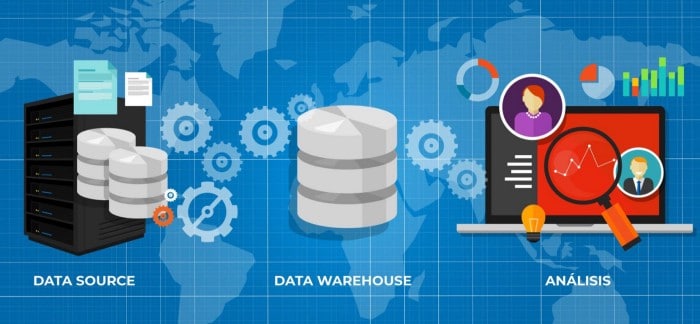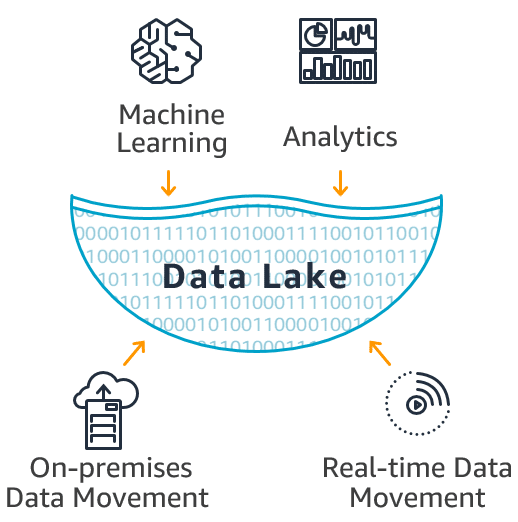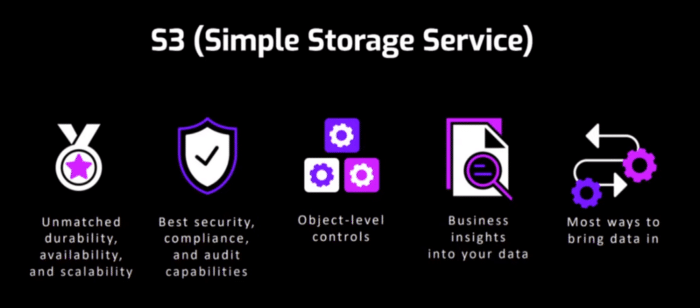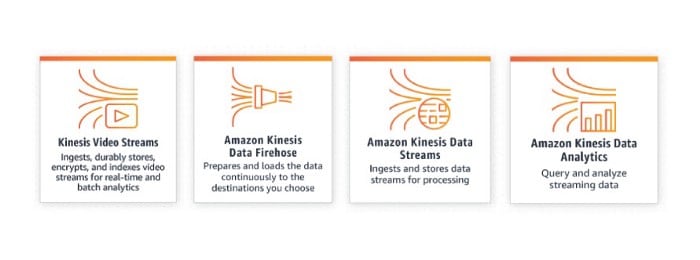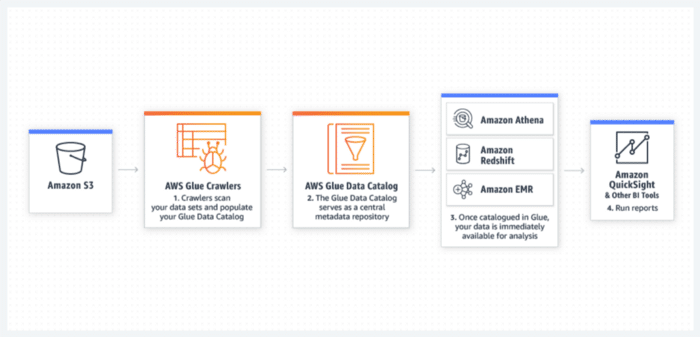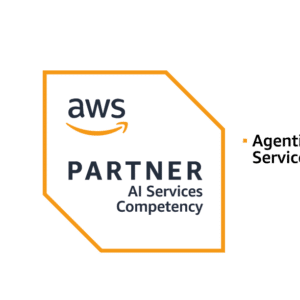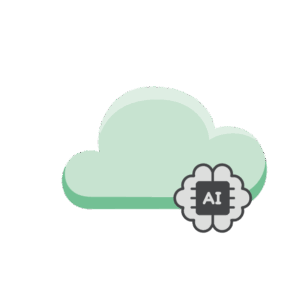
Are you looking for a reliable and efficient cloud computing solution for your business? Look no further than AWS Cloud Computing by Amazon Web Services. In today’s digital landscape, businesses need a scalable and secure cloud infrastructure to drive innovation and stay ahead of the competition. AWS Cloud Computing offers a wide range of services and features to help businesses build and manage their cloud environments with ease.
With AWS Cloud Computing, you can take advantage of the diverse range of cloud computing services to meet your specific business needs. Whether it’s storage, computing power, or analytics, AWS has got you covered. The scalability options provided by AWS allow you to scale your cloud resources up or down as per your requirements, ensuring optimal resource utilization and cost-effectiveness.
Building a robust cloud architecture is crucial for the success of any business. AWS Cloud Infrastructure provides all the tools and resources you need to architect your cloud environment using industry best practices. From virtual servers to database management and load balancing, AWS offers a comprehensive suite of services to fulfill your cloud infrastructure needs.
One of the major advantages of AWS Cloud Computing is its seamless deployment capabilities. You can easily deploy your applications and services without worrying about the underlying infrastructure. This frees up your time and resources, allowing you to focus on what matters most: your business.
When it comes to leveraging AWS Cloud Computing to its full potential, DinoCloud steps in as your expert guide. With a knack for innovation and a commitment to your business’s growth, DinoCloud excels in tailoring AWS’s extensive cloud solutions to fit your unique needs. Imagine partnering with DinoCloud, where your journey into AWS’s cloud landscape is not just about adopting technology but about transforming your business to thrive in the digital age.
Key Takeaways:
- AWS Cloud Computing offers a diverse range of cloud computing services for businesses.
- The scalability options provided by AWS allow for optimal resource utilization and cost-effectiveness.
- Architect your cloud environment using best practices provided by AWS Cloud Infrastructure.
- Seamlessly deploy your applications and services with AWS.
- Benefits of AWS Cloud Computing include scalability, cost-effectiveness, agility, and efficient resource management.
Key Features of AWS Cloud Computing
When it comes to cloud computing services, AWS stands out as a top provider, offering a wide range of features that businesses can leverage to optimize their cloud architecture. In this section, we will explore the key features of AWS Cloud Computing, including its diverse range of cloud computing services, scalability options, and seamless deployment capabilities. Let’s dive in and discover how these features can empower businesses to excel in the digital realm.
Diverse Range of Cloud Computing Services
One of the major strengths of AWS is its extensive portfolio of cloud computing services. From computing power and storage to databases and analytics, AWS offers a comprehensive suite of services to meet the diverse needs of businesses. Whether you are a startup, a small business, or an enterprise, AWS has cloud solutions tailored to your specific requirements.
Scalability for Growing Businesses
Scalability is a crucial factor for businesses in today’s rapidly evolving market. AWS Cloud Computing provides businesses with the flexibility to scale their infrastructure up or down based on demand. With AWS, you can easily add or remove resources to meet the changing needs of your business, ensuring cost-effectiveness and efficiency.
Seamless Deployment Capabilities
Deploying applications and services in the cloud can be a complex process, but AWS simplifies it with its seamless deployment capabilities. With AWS Cloud Computing, businesses can easily migrate their existing infrastructure to the cloud or build new cloud-native applications. The intuitive deployment tools provided by AWS make the process quick, efficient, and hassle-free.
By leveraging the diverse range of cloud computing services, scalability options, and seamless deployment capabilities offered by AWS, businesses can optimize their cloud architecture and unlock the full potential of the cloud. In the next section, we will delve into the AWS Cloud Infrastructure and explore its various components that enable businesses to build robust and efficient cloud environments.
AWS Cloud Infrastructure
In this section, we will delve into the AWS Cloud Infrastructure, examining its various components and discussing how businesses can architect their cloud environment using best practices provided by AWS. Cloud infrastructure refers to the underlying foundation and resources that enable the delivery of cloud computing services.
When building a cloud architecture, organizations need to carefully consider factors such as scalability, flexibility, security, and performance. AWS provides a robust set of tools, services, and technologies that allow businesses to design and deploy their cloud infrastructure effectively.
To maximize the benefits of AWS Cloud Computing, businesses need to understand and implement efficient cloud management practices. Cloud management involves monitoring, optimizing, and maintaining the cloud infrastructure to ensure it meets the organization’s requirements and delivers optimal performance.
By utilizing AWS cloud management tools, businesses can gain greater visibility into their cloud resources, automate processes, and effectively allocate resources based on demand. This enables organizations to optimize costs, improve efficiency, and enhance the overall performance of their cloud infrastructure.
Overall, AWS Cloud Infrastructure plays a crucial role in enabling businesses to leverage the power of AWS Cloud Computing. By architecting an efficient and well-managed cloud environment, organizations can take advantage of the scalability, security, and reliability offered by AWS, empowering them to innovate and thrive in the digital era.
Benefits of AWS Cloud Computing
When it comes to cloud computing, AWS has emerged as a leader in providing scalable cloud solutions for businesses. The benefits of using AWS Cloud Computing extend beyond cost-effectiveness and agility, offering a range of advantages that can revolutionize the way businesses operate.
- Scalability: With AWS, businesses can easily scale their cloud infrastructure based on their evolving needs. This scalability allows organizations to handle spikes in demand efficiently and seamlessly, ensuring optimal performance even during peak periods.
- Cost-effectiveness: By leveraging AWS Cloud Computing solutions, businesses can significantly reduce their infrastructure costs. With AWS, there is no longer a need to invest in expensive hardware or worry about maintenance and upgrades. Instead, businesses can pay only for the resources they use, resulting in substantial cost savings.
- Agility: AWS offers a wide range of services and tools that enable businesses to quickly deploy, manage, and scale their cloud infrastructure. This agility allows organizations to adapt to changing market conditions, experiment with new ideas, and innovate rapidly, giving them a competitive edge.
Moreover, migrating to the cloud can bring additional benefits to businesses. With AWS Cloud Computing, the migration process becomes seamless and efficient, allowing organizations to transition their applications and data with minimal disruption. This enables businesses to take full advantage of the scalability, cost-effectiveness, and agility offered by the cloud.
| Benefits | Description |
|---|---|
| Scalability | Allows businesses to easily scale their cloud infrastructure based on demand. |
| Cost-effectiveness | Reduces infrastructure costs by paying only for resources used. |
| Agility | Enables quick deployment, management, and scaling of cloud infrastructure. |
| Seamless Migration | Facilitates a smooth transition to the cloud with minimal disruptions. |
By harnessing the benefits of AWS Cloud Computing, businesses can unlock new possibilities for growth, innovation, and operational efficiency. Whether it’s achieving scalability, optimizing cost, or ensuring agility, AWS provides the foundation for businesses to thrive in the digital era.
AWS Cloud Security
When it comes to cloud computing services, security of data is a top priority for businesses. With AWS Cloud Computing, you can trust that your sensitive information is protected by a robust security architecture that meets the highest industry standards.
The AWS cloud architecture is designed with multiple layers of defense to safeguard your data. From physical security measures to network, application, and data level security controls, AWS Cloud Computing provides a comprehensive security framework that ensures the confidentiality, integrity, and availability of your information.
One of the key security measures offered by AWS Cloud Computing is data encryption. Your data is encrypted both at rest and in transit, ensuring that only authorized parties can access and decipher it. With encryption, you can have peace of mind knowing that your data is safe from unauthorized access or interception.
In addition to encryption, AWS Cloud Computing also offers compliance certifications that validate its adherence to industry-specific regulations and standards. These certifications include ISO 27001, SOC 1 and SOC 2, HIPAA, and PCI DSS, among others. By choosing AWS Cloud Computing, you can ensure that your cloud infrastructure meets the necessary compliance requirements for your industry.
Furthermore, AWS provides advanced cloud management tools that allow you to configure and monitor your security settings, detect and respond to security events, and apply security patches and updates as needed. With these tools, you can maintain full control over your cloud environment and proactively address any potential security risks.
Overall, AWS Cloud Computing offers comprehensive security measures to protect your data and ensure the confidentiality, integrity, and availability of your information. By leveraging AWS Cloud Security, businesses can confidently embrace cloud computing services without compromising the security of their data.
AWS Cloud Solutions for Businesses
When it comes to cloud computing services, AWS offers a wide range of innovative solutions that cater to the diverse needs of businesses in different industries. These scalable cloud computing solutions provide businesses with the flexibility and agility they require to stay ahead in today’s competitive landscape.
One of the key advantages of AWS Cloud Computing is its ability to seamlessly deploy applications and data, allowing businesses to quickly adapt to changing requirements. With AWS, you can easily scale your cloud infrastructure to meet the demands of your growing business, ensuring optimal performance and cost-effectiveness.
But don’t just take our word for it. Let’s take a look at some case studies and success stories that highlight the transformative power of AWS Cloud Computing.
Now, let’s take a deeper look at some of the cloud solutions offered by AWS:
| Cloud Solution | Description |
|---|---|
| AWS Elastic Beanstalk | Allows businesses to easily deploy and manage applications in multiple languages, making it ideal for startups and developers. |
| AWS Lambda | A serverless computing service that lets businesses run code without provisioning or managing servers, enabling faster development and deployment. |
| AWS S3 | A scalable object storage service that offers industry-leading durability, availability, and security, ensuring seamless storage and retrieval of data. |
| AWS RDS | A managed database service that simplifies the process of setting up, operating, and scaling a relational database in the cloud. |
These are just a few examples of the cloud solutions offered by AWS. With its extensive portfolio of services, AWS can empower businesses to innovate, scale, and succeed in the digital era.
AWS Cloud Migration Best Practices
When considering cloud migration, it is vital to follow best practices to ensure a smooth and successful transition to AWS Cloud Computing. This section will explore the key considerations, challenges, and strategies involved in migrating applications and data to the cloud.
Considerations for Cloud Migration
Before embarking on a cloud migration journey, it is crucial to assess your current infrastructure, applications, and data to determine the most suitable migration approach. Consider the following factors:
- Application Dependencies: Identify dependencies between applications and their interaction with other systems that may impact the migration process.
- Data Volume: Evaluate the size and complexity of the data to be migrated, ensuring you have appropriate bandwidth and storage capabilities.
- Security and Compliance: Ensure your migration plan aligns with security requirements and regulatory compliance standards.
- Cost Analysis: Analyze the cost of migration, including potential savings in infrastructure and operational overheads.
Challenges of Cloud Migration
Migrating to the cloud may present certain challenges that need to be addressed for a successful transition:
- Legacy Applications: Assess the compatibility of legacy applications with the cloud environment, considering necessary modifications or rebuilding.
- Data Transfer Speed: Plan for efficient data transfer and minimize downtime during the migration process.
- Resource Optimization: Optimize cloud resources to ensure optimal performance and cost efficiency post-migration.
- Staff Training: Provide adequate training and support to your IT team to facilitate a smooth transition and enable them to leverage cloud solutions effectively.
Strategies for Successful Cloud Migration
Implementing the right strategies can significantly contribute to the success of your cloud migration project:
- Phased Approach: Break down the migration process into smaller phases to focus on specific applications, data sets, or user groups.
- Migration Tools and Services: Leverage AWS migration tools and services to simplify and automate the migration process.
- Testing and Validation: Thoroughly test and validate migrated applications and data to ensure functionality and data integrity.
- Monitoring and Optimization: Continuously monitor and optimize your cloud infrastructure to maximize performance and cost savings.
By following these best practices and leveraging the extensive capabilities of AWS Cloud Computing, businesses can efficiently migrate their applications and data to the cloud, unlocking the benefits of enhanced scalability, agility, and cost-effectiveness.
| Considerations | Challenges | Strategies |
|---|---|---|
| Application Dependencies | Legacy Applications | Phased Approach |
| Data Volume | Data Transfer Speed | Migration Tools and Services |
| Security and Compliance | Resource Optimization | Testing and Validation |
| Cost Analysis | Staff Training | Monitoring and Optimization |
Conclusion
In conclusion, AWS Cloud Computing offers a wide range of cloud solutions and efficient cloud deployment options that can revolutionize the way businesses operate in today’s digital landscape. By leveraging AWS Cloud Computing, businesses can unlock the potential for scalability, cost-effectiveness, and agility.
With AWS Cloud Computing, organizations can realize the benefits of a scalable cloud infrastructure, enabling them to easily adapt to changing business needs without the worry of capacity constraints. The diverse range of cloud computing services offered by AWS empowers businesses to build robust and secure cloud architectures that enhance data security and compliance.
Furthermore, AWS Cloud Computing facilitates seamless cloud migration, allowing businesses to smoothly transition their applications and data to the cloud. This enables companies to optimize their operations and drive innovation by leveraging the power of AWS’s scalable infrastructure and advanced cloud solutions.
In summary, by embracing AWS Cloud Computing, businesses can stay competitive in today’s ever-evolving digital landscape. The array of cloud solutions and efficient cloud deployment options provided by AWS can help organizations unlock new possibilities, drive innovation, and achieve their business goals with ease and reliability.
In DinoCloud, our commitment is to ensure you fully leverage AWS Cloud Computing. Our team of experts is here to guide you through every step of the process, from planning and migration to managing and optimizing your cloud infrastructure.
Our article on Data Clouds offers insights into leveraging AWS for efficient data management and analysis, showcasing the synergy between AWS services and data cloud functionality. Read more here
FAQ
What is AWS Cloud Computing?
AWS Cloud Computing refers to the cloud computing services provided by Amazon Web Services (AWS). It allows businesses to build and manage scalable cloud infrastructure for various purposes, such as hosting websites, running applications, and storing data.
What are the key features of AWS Cloud Computing?
AWS Cloud Computing offers a wide range of features, including a comprehensive set of cloud computing services, easy and efficient deployment options, seamless scalability, and robust security measures. These features enable businesses to optimize their cloud solutions and streamline their operations.
How does AWS Cloud Computing benefit businesses?
AWS Cloud Computing provides numerous benefits to businesses, including scalability, cost-effectiveness, agility, and the ability to migrate existing applications and data to the cloud seamlessly. It offers a reliable and flexible cloud infrastructure that can enhance business efficiency and innovation.
How does AWS ensure the security of data in the cloud?
AWS Cloud Computing prioritizes the security of data. It provides a robust security architecture, including data encryption, identity and access management controls, and compliance certifications. These measures ensure that businesses can store and retrieve their sensitive information securely in the cloud.
What cloud solutions does AWS offer for businesses?
AWS offers a diverse range of cloud solutions for businesses across various industries. These solutions include compute power, storage, databases, machine learning, analytics, and more. Businesses can leverage these solutions to innovate, scale, and optimize their operations using AWS Cloud Computing.
LinkedIn: https://www.linkedin.com/company/dinocloud
Twitter: https://twitter.com/dinocloud_
Instagram: @dinocloud_
Youtube: https://www.youtube.com/c/DinoCloudConsulting


